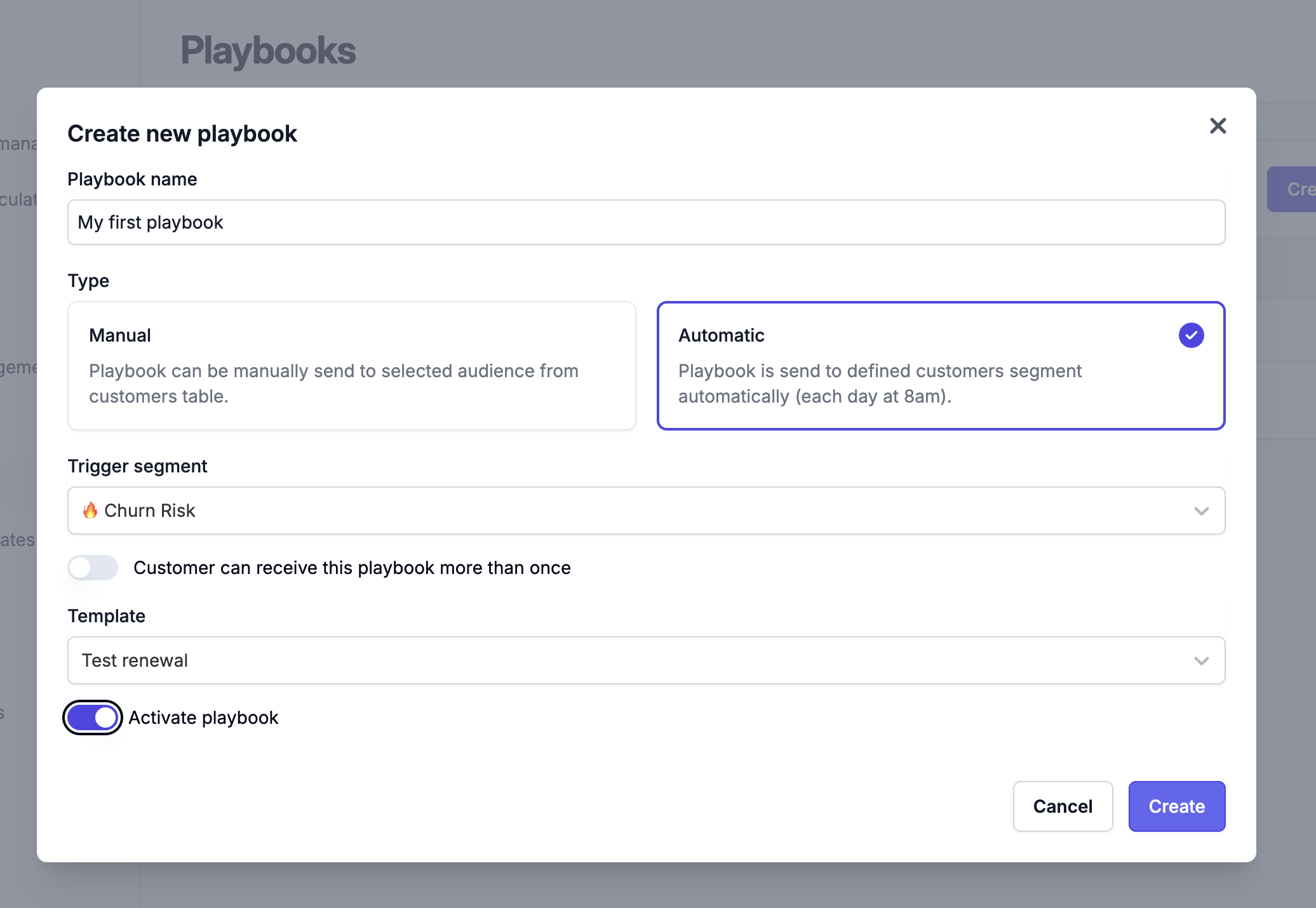How to Automate Customer Success Outreach with Playbooks

As customer bases grow, staying engaged and reducing churn becomes challenging. Automated Playbooks make it easier by streamlining outreach, ensuring key actions happen on time, and allowing teams to focus on high-impact tasks.
Let’s explore how automating Playbooks can improve your customer success strategy.
What Is an Automated Playbook?
An automated Playbook is a series of actions triggered by specific customer behaviors or conditions. This workflow executes automatically, ensuring that the right steps are taken without manual intervention.
Playbooks cover a variety of scenarios:
- Identifying at-risk customers
- Detecting a drop in product usage
- Noticing the lack of adoption for a key feature
- Managing contract renewal reminders
These automated steps help you retain customers and boost ARR.
Why Use Playbooks?
1. Be Proactive, Not Reactive
Playbooks ensure that the right actions happen at the right time. This approach helps you avoid surprises when customers decide to churn.
By proactively responding to their behavior and offering help when needed, you can keep customers satisfied and engaged, reducing the risk of churn.
2. Save Your Time
Once Playbooks are set up, they run automatically. This frees you from handling repetitive tasks, allowing you to focus on more strategic efforts. Your customers still receive timely support, but you only deal with the most critical tasks.
3. Boost Consistency and Personalization
Automated Playbooks allow you to deliver consistent, personalized communication. Each customer gets the right message at the right time, helping you build stronger relationships while maintaining a scalable process.
How to Build a Playbook?
Creating a Playbook in customer success platforms like Customerscore.io is straightforward and user-friendly. Here’s how to get started:

- Define Your Goal
First, decide what you want to achieve with your Playbook. Whether it's re-engaging inactive users, reminding customers about contract renewals, or encouraging feature adoption, having a clear goal will guide the Playbook’s structure. - Create a Segment
Build a specific segment of customers based on behaviors or events that will trigger the Playbook. For example, you might include customers who have experienced a drop in product usage, those with a lack of login activity, or those approaching a contract renewal date. This targeted approach ensures that your Playbook is activated for the right customers at the right time. - Create Automated Actions
Once the trigger is set, define the actions you want the Playbook to take. This can include sending emails, offering a call, or notifying your Customer Success team to intervene. - Test and Optimize
After setting up your Playbook, test it to ensure the workflow runs smoothly. Monitor its performance and optimize based on the results to improve effectiveness.
Are you looking to automate your daily customer success routine? Do you need assistance with creating Playbooks? Let’s schedule a call to explore the possibilities!
